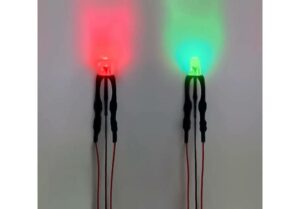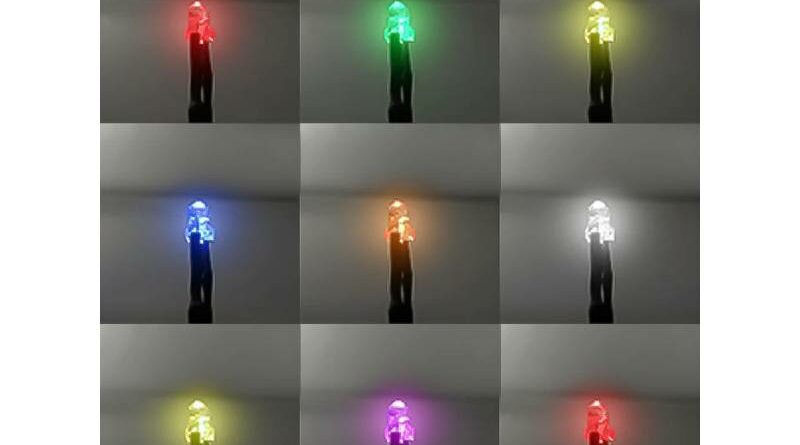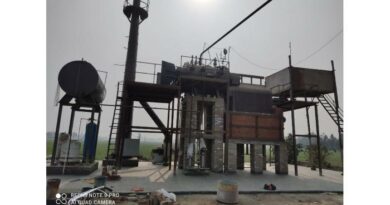How Small LED Light Bulbs Save Energy and Money?
Lighting is an essential part of our daily lives, but it can also account for a significant portion of household energy costs. Over the years, traditional incandescent and fluorescent light bulbs have been the go-to choice for lighting homes and businesses. However, with advancements in technology, the introduction of LED (Light Emitting Diode) bulbs has revolutionized the lighting industry. In particular, small LED light bulbs have gained popularity due to their energy efficiency and cost-saving benefits. In this article, we will explore how small LED light bulbs save both energy and money, and why they are a smart choice for homeowners and businesses alike.
The Basics of LED Technology
LED light bulbs are a modern alternative to traditional incandescent and fluorescent bulbs. Unlike incandescent bulbs, which generate light by heating a filament until it glows, LED bulbs use a semiconductor to convert electricity into light. This process is much more efficient, as it produces far less heat and uses significantly less energy. The small LED light bulbs also make them versatile and perfect for a variety of lighting applications.
LED technology is built on the principle of electroluminescence, where electrons move through a semiconductor material to release energy in the form of light. This technology results in long-lasting bulbs that consume less power while producing the same amount of light as larger, traditional bulbs.

Energy Efficiency: The Key to Saving Energy
One of the most significant advantages of small LED light bulbs is their energy efficiency. Traditional incandescent bulbs convert only 10% of the energy they use into visible light, with the remaining 90% being wasted as heat. In contrast, LED bulbs are much more efficient, converting up to 90% of the energy they use into light. This means that for the same amount of light output, an LED bulb uses a fraction of the energy compared to an incandescent bulb.
For example, a 10-watt LED bulb can provide the same amount of light as a 60-watt incandescent bulb, meaning it consumes 83% less energy. This dramatic difference in energy consumption makes LED bulbs an excellent choice for reducing overall electricity usage in homes and businesses.
Long Lifespan: Less Frequent Replacements
Small LED light bulbs also have a significantly longer lifespan compared to traditional light bulbs. While incandescent bulbs typically last around 1,000 hours, and compact fluorescent lamps (CFLs) last around 8,000 hours, LED bulbs can last anywhere from 15,000 to 50,000 hours, depending on the quality and usage. This extended lifespan reduces the frequency of bulb replacements, leading to additional savings over time.
The durability of LED bulbs is another factor that contributes to their cost-effectiveness. They are less prone to breaking or burning out compared to traditional bulbs, which often need to be replaced after only a few months of use. As a result, consumers can avoid the hassle and cost of constantly purchasing new bulbs.
Cost Savings: Lower Utility Bills
The energy efficiency and longevity of small LED light bulbs translate directly into savings on electricity bills. Although LED bulbs tend to have a higher upfront cost compared to incandescent or CFL bulbs, their long-term savings far outweigh the initial investment. With energy consumption reduced by up to 80-90% compared to incandescent bulbs, you can expect a noticeable decrease in your monthly energy bill.
For instance, if you replace just 10 traditional 60-watt incandescent bulbs with 10 10-watt LED bulbs, you can save about 500 kilowatt-hours per year. This could result in savings of around $60 to $100 annually, depending on your local electricity rates. Over time, the energy savings add up, making LED bulbs a smart investment.
Moreover, many utility companies offer rebates and incentives for homeowners and businesses that switch to energy-efficient lighting options like LED bulbs. These rebates can help offset the initial cost of purchasing LED bulbs and accelerate the return on investment.
Environmental Impact: Reducing Carbon Footprint
Small LED light bulbs not only save money but also benefit the environment. As energy-efficient lighting, they contribute to a reduction in the overall demand for electricity. Since electricity production is often reliant on fossil fuels, using less energy means fewer greenhouse gas emissions and a smaller carbon footprint.
The extended lifespan of LED bulbs also reduces waste. Traditional bulbs must be disposed of more frequently, contributing to landfill waste, while LED bulbs have a longer life, reducing the number of bulbs that need to be thrown away. Furthermore, many LED bulbs are made from recyclable materials, making them more eco-friendly than their incandescent counterparts.
By switching to LED bulbs, consumers can play an active role in reducing environmental impact and promoting sustainability.
Versatility and Design: Lighting for Every Need
Small LED light bulbs offer excellent versatility, making them suitable for a wide range of applications. Whether you need lighting for small lamps, pendant lights, recessed lighting, or outdoor fixtures, LED bulbs can meet various needs. Their compact size makes them ideal for tight spaces and intricate fixtures where traditional bulbs might not fit.
Additionally, LED bulbs are available in a wide variety of colors and brightness levels, allowing for customization of lighting to suit different moods and settings. Whether you prefer bright, cool light for reading or soft, warm light for relaxation, LED technology provides a range of options that traditional bulbs simply cannot match.
How to Maximize Savings with Small LED Light Bulbs?
To fully take advantage of the energy and money-saving benefits of small LED light bulbs, consider the following tips:
- Replace Old Bulbs Gradually: If you cannot replace all of your bulbs at once, start by replacing the most frequently used bulbs in your home or business, such as those in high-traffic areas like the kitchen or living room.
- Use LED Dimmers: If you use dimmers, ensure that your LED bulbs are compatible. Dimming LED bulbs can reduce energy use even further, leading to additional savings.
- Optimize Lighting Fixtures: Use LED bulbs in fixtures that direct light efficiently. For instance, track lighting or under-cabinet lighting can provide focused illumination with less energy waste.
- Choose LED Bulbs with the Right Brightness: LED bulbs come in different brightness levels. Make sure to select bulbs that are not excessively bright for the space, as overlighting can result in wasted energy.
- Take Advantage of Incentives: Check with your utility provider for any rebates or incentives that might be available for switching to LED bulbs.
Conclusion
Small LED light bulbs are a cost-effective and energy-efficient solution for both residential and commercial lighting needs. By consuming less energy, lasting longer, and requiring fewer replacements, they offer significant savings over time. Moreover, their positive environmental impact and versatility make them an ideal choice for consumers looking to reduce their energy consumption and carbon footprint.
While the initial cost of small LED light bulbs may be higher than traditional bulbs, the long-term benefits far outweigh the investment. With energy-efficient lighting, you can enjoy lower utility bills, a longer lifespan for your bulbs, and a positive contribution to sustainability. So, consider making the switch to small LED light bulbs today and start saving energy, money, and the environment.




